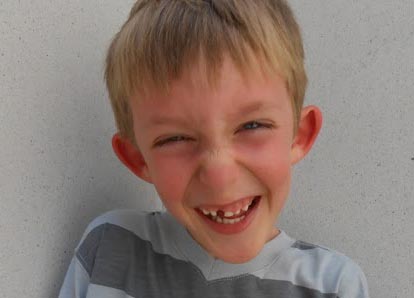Here is the puzzle as presented earlier this week:
At some point, Max will have loosed his first three (3) teeth. Based upon the standard starting number of teeth in the mouth of someone his age, there are only so many ways that he could loose them. If the pattern by which teeth are loosed is truly random, we can calculate the odds of any given student in his class having loosed the same three teeth as their first loosed, but not necessarily in the same order.What is the minimum number of students that would need to be in his class for there to be a 50/50 chance of another student loosing their first three teeth in the same positions?
The puzzle was indeed a variant on the classic birthday problem. Given the relatively rare chance of something occurring, like a common birth date or common pattern of tooth loss, what is the minimum number of observances required to gain a 50/50% shot of coincident occurrence?
With the classic birthday problem, the odds of two people having the same birth date (i.e., July 2nd) are 1/365. Add in a third person, and the odds of any two of them having the same birth date goes up. It turns out that with a group of only 23 people there is a 50/50% chance of two of them having the same birthday.
The formula to calculate the odds of any two of a group of n people not sharing the same birth date turn out to be 365Pn / 365n where xPk is the “permutation” function, or x!/(x-k)!. More generally, for events that happen 1/q of the time, the formula is qPn / qn.
In this case, with there being some 20 standard “baby” teeth before replacement, there are 20P3 or 1140 different patterns of loosing three distinct teeth. To calculate the number of children needed so that some pair among them have the same loosing pattern, you could investigate values of n to see which lowest value has 1 – (1140Pn / 1140n) greater than 0.50. The lowest such n is 41.
That’s the question that I meant to ask. Really.
The question that I actually asked, above, was about the number of kids required in his class to match the pattern of Max’s tooth loosing. This is a different question altogether, but a simpler one.
If we put one additional kid in Max’s class, there is a 1139/1140 chance that they won’t have the same pattern. If we add a second additional match potential, the odds that they will match are 1 – (1139/1140)2.
A total of n additional kids gets us 1 – (1139/1140)n, and the smallest n to get us to 50/50% is 789.
Anyone that took a shot at either question was entered into the random drawing. Congratulations to Drew Taylor, winner of this week’s $50 ThinkGeek gift certificate.




